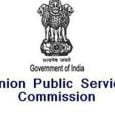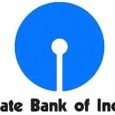
A second interview can be more challenging than the first. Whereas the first interview is generally used to vet a candidate’s personality and abilities, the competition heats up at Stage 2. Recruiters will want to get deeper into their answers, reaffirm their opinions, and fill in any gaps about the potential hire. Changing your mindset for the second interview will enable you to weed out all but the most qualified candidates.
What an employer really wants to know at this stage is what separates one candidate from another, what their technical abilities are and the logistics involved should they offer the job. This way they can make a direct comparison between the remaining candidates.
Jack Craven, Executive leadership coach at All in Executive Coaching suggests that following the below steps, HR can successfully find the right fit for their organisations.
Pre-Interview Process:
- Get more people involved for a cross-section of feedback. Think about identifying who should be part of the second round of interviews with the candidates. Support the interview team on which types of questions to ask and what to look for from the candidate. Everyone needs a clear understanding of the job description, expectations and goals of the hire.
The Interview Process:
- Everyone involved in the interview process should agree on the key characteristics and areas to focus on during the interview. Have them rank the key areas (skills, experience, culture fit, leadership style). Culture fit and values are more important than their work history. Help those involved frame questions tied to the agreed key areas and have them take detailed notes.
- Listen to the candidate’s responses and questions. Are they listening or anticipating the questions? Does the answer sound canned? Are their questions and answers insightful? Do they show a true understanding of the job and what is expected? Ask them what excites them about this job. Ask the candidates to share their accomplishments and listen if they also acknowledge their team. As they talk, what is your gut telling you (are
-
- Get the candidates out of their comfort zone. Have them meet with a group or team to see how they handle the stress of a round robin of questions. Ask probing, direct questions in areas where they are more vulnerable, for example, job history gaps.
- Ask questions to learn about their thought process. Perhaps give them a task to complete between the first and second interview. Find a current issue within the company that relates to the job opening. You can learn how they approach an issue, problem solve, and how seriously they take the assignment.
- As they share their work history, ask them the names of the key people they worked with. Write these names down. After the interview, select the names of the people who were involved at significant periods. Get the candidate’s permission to talk to your choice of people, rather than call the candidate’s hand-picked references.
- Then ask the candidate to list three people that they helped develop professionally (if relevant). How quickly do they answer the question? If they are still in contact with the person, it shows they developed a close relationship. Then ask permission to contact these names as references, as well, in order to learn more about the candidate’s leadership style. This will help you see if this person’s style is a good fit for your company.
Post-Interview Process:
- Have a debrief with each person who was part of the interview process and obtain their feedback. What were the candidate’s answers to key questions? What questions did they ask? What did they observe about body language, attitude, energy and temperament? Did the candidate treat everyone with respect? Have them share any concerns they may have.
- Follow up with the references you felt would be most important to contact. Ask questions about the candidate’s leadership and traits that are most important regarding your fit and opening.
- Do a background check and verify employment history. Don’t assume that everyone is accurate on their CV.
[Source:- RT]




